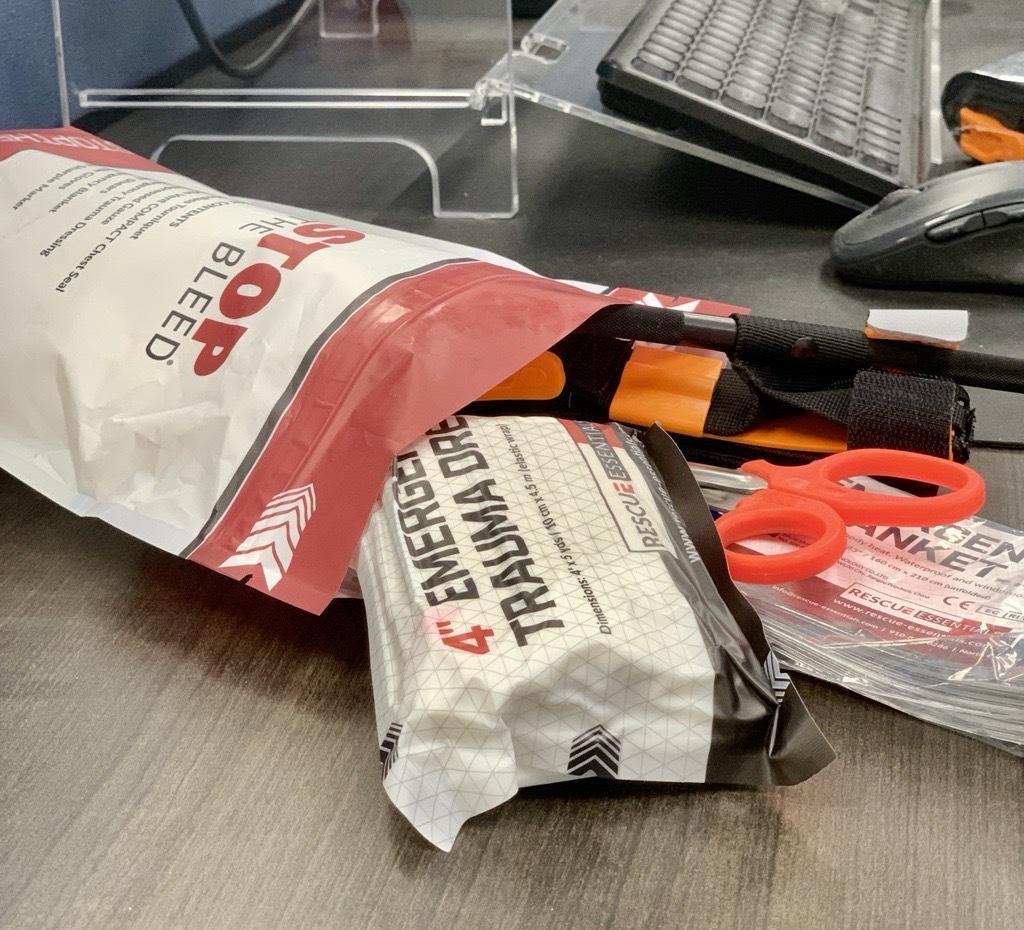Facts and Figures
3-5 Minutes
Victims can bleed out in as little as 3–5 minutes. This accounts for 40% of trauma-related deaths.
7-10 Minutes
Average EMS response times are 7–10 minutes in urban areas, 10–15 in suburban and even longer in rural settings.
40% of Deaths
40% of trauma related deaths are due to uncontrolled severe bleeding. Bleeding control kits and proper training provide tools necessary to help stop hemorrhage at the scene.
View KitsWhat is in a bleeding control kit?
Bleeding control kits contain components to address severe trauma and bleeding - intended to be used by trained lay-people or professional first resonders, to quickly address severe bleeding. Our kits come in three configurations to meet levels of requirements, training, and budget needs.

Components
- 1 Tourniquet - Can be used to quickly stop arterial bleeding on limbs. Tourniquets are a safe, effective, proven tool to control severe hemorrhage.
- 2 Compressed Gauze - Can be used to pack wounds which creates pressure at the source of bleeding to stop the flow. Useful for stopping bleeding in wound sites where tourniquets can’t be applied, such as shoulder/armpits or groin area.
- 3 Emergency Trauma Dressing - The primary usage for this dressing is to cover a wound and help apply pressure after a wound has been packed with gauze. The elastic-like bandage can be used for other purposes as well, such as creating a sling or wrapping an improvised splint as needed.
- 4 Trauma Shears - Can be used to quickly remove clothing, boots, bags or anything else that is in the way so you can quickly find the injury.
- 5 Mini Sharpie Marker - Write the tourniquet application time on the device so EMS will know how long the tourniquet has been on the patient. Take any other notes as needed on whatever surface you have.
- 6 Gloves - Protect yourself before taking care of injuries on others.
- 7 Bleeding Control Instructions - It is important to get proper training and practice ahead of time. Have the supplies you need accessible, and know how to use them. This instruction card is a guide to help remind the user on steps to take during an emergency, but it is NOT a substitute for proper training and practice.
- 8 Chest Seal - (Optional, included in intermediate and advanced kits) Used to address penetrating chest wounds. Left untreated, these injuries can cause lungs to collapse and make breathing difficult or completely inhibited.
- 9 Hypothermia Blanket - (Optional, included in intermediate and advanced kits) With any trauma in any environment, hypothermia is a serious concern. Keep the patient warm while waiting for EMS to respond.
- 10 Hemostatic Gauze - (Optional, included in advanced kits) Similar function to compressed gauze, but includes an embedded agent in the gauze that helps accelerate clotting at the point of injury.
Multi-Trauma Kits
We offer kits as individual modules, intended to address a single trauma, as well as multi-trauma kits which contain multiple identical modules for situations where more than one casualty may occur.
All of the multi-trauma kits are offered in the basic, intermediate and advanced configurations and different storage options. Consider the quantity needed, location for storage, and response practices when selecting your kit.
View Multi-Trauma Kits
